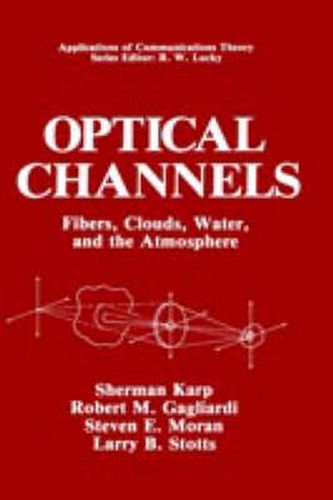Readings Newsletter
Become a Readings Member to make your shopping experience even easier.
Sign in or sign up for free!
You’re not far away from qualifying for FREE standard shipping within Australia
You’ve qualified for FREE standard shipping within Australia
The cart is loading…






This title is printed to order. This book may have been self-published. If so, we cannot guarantee the quality of the content. In the main most books will have gone through the editing process however some may not. We therefore suggest that you be aware of this before ordering this book. If in doubt check either the author or publisher’s details as we are unable to accept any returns unless they are faulty. Please contact us if you have any questions.
When we were first approached by Dr. Lucky to write this book we were very enthusiastic about the prospect, since we had contemplated a similar project for quite some time. The difficulty lay in how best to digest the vast amount of data on optical propagation, reduce it to a book of manageable size, and simultaneously form the transition from the physics of propagation to the engineering of optical channels. This is the intent of Optical Channels. In accomplishing our goal it was necessary to condense the material on optical propagation and, in so doing, we have left a large amount to be handled via references. We have tried to make these decisions in a consistent manner so that the book will be uniform in its treatment of this topic. We identify four channels for consideration: the free-space channel, which: is characteristic of a tranquil atmosphere or a space-to-space link; the turbulent channel, which is characteristic of the atmospheric channel; the scatter channel in two forms, clouds and water; and the fiber optic channel. For each of these channels we have tried to reduce the applicable propagation theory to a level that can be used for engineering design. This has been done by example, but here again decisions had to be made on which examples to present. We have not tried to present any material on optical components and consequently other references on engineering would be necessary to supplement this book.
$9.00 standard shipping within Australia
FREE standard shipping within Australia for orders over $100.00
Express & International shipping calculated at checkout
This title is printed to order. This book may have been self-published. If so, we cannot guarantee the quality of the content. In the main most books will have gone through the editing process however some may not. We therefore suggest that you be aware of this before ordering this book. If in doubt check either the author or publisher’s details as we are unable to accept any returns unless they are faulty. Please contact us if you have any questions.
When we were first approached by Dr. Lucky to write this book we were very enthusiastic about the prospect, since we had contemplated a similar project for quite some time. The difficulty lay in how best to digest the vast amount of data on optical propagation, reduce it to a book of manageable size, and simultaneously form the transition from the physics of propagation to the engineering of optical channels. This is the intent of Optical Channels. In accomplishing our goal it was necessary to condense the material on optical propagation and, in so doing, we have left a large amount to be handled via references. We have tried to make these decisions in a consistent manner so that the book will be uniform in its treatment of this topic. We identify four channels for consideration: the free-space channel, which: is characteristic of a tranquil atmosphere or a space-to-space link; the turbulent channel, which is characteristic of the atmospheric channel; the scatter channel in two forms, clouds and water; and the fiber optic channel. For each of these channels we have tried to reduce the applicable propagation theory to a level that can be used for engineering design. This has been done by example, but here again decisions had to be made on which examples to present. We have not tried to present any material on optical components and consequently other references on engineering would be necessary to supplement this book.